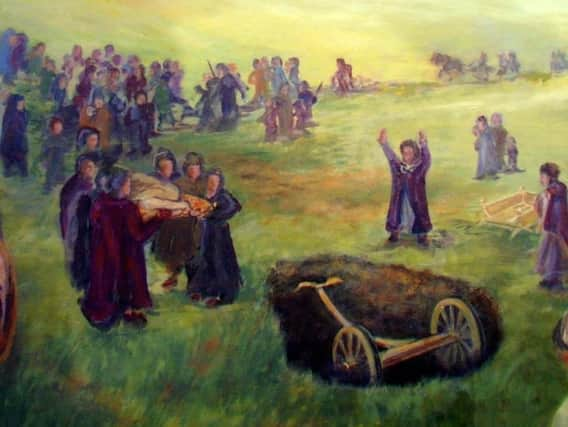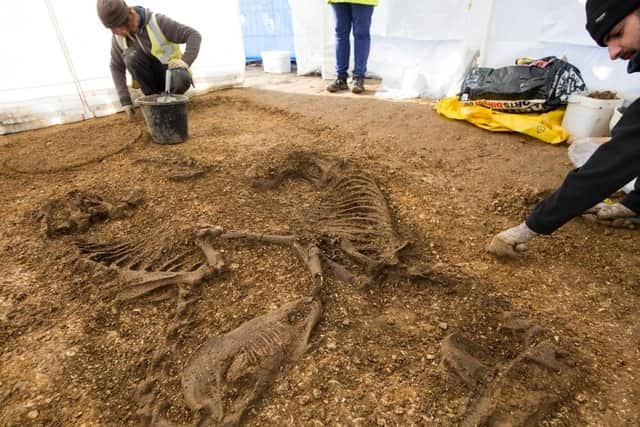Iron Age horse and chariot discovered in East Yorkshire town


It was found on The Mile development some weeks ago where more than 200 homes are to be built. Both horse and human remains were found
Simon Usher, managing director at Persimmon Homes Yorkshire, said: “We can confirm that a significant archaeological discovery, featuring an Iron Age horse-drawn chariot, has been made at our development, The Mile in Pocklington.
Advertisement
Hide AdAdvertisement
Hide Ad“Careful excavation is ongoing by our archaeologists and a thorough investigation is in process to date and detail the find.


“Until this process is complete we are not in a position to comment on the possible historical benefit of the find.
"We expect to have further details over the coming months. The discovery will feature on BBC Four’s Digging for Britain at the end of this year.”
It comes just a year after another Iron Age chariot and two well-preserved horses were discovered on another building site in the town, David Wilson Homes’ Pavilion Square development.
Advertisement
Hide AdAdvertisement
Hide AdThe chariot found last year was only the twenty-sixth to be excavated in the country and was found in an ancient cemetery off Burnby Lane, dating back to 800BC.
The deliberate inclusion of horses as part of the burial rite was "highly unusual".
The last time such a discovery was made is believed to have been on Arras Hill outside Market Weighton in 1817.
The site had already yielded fascinating finds, including the remains of a warrior ritually buried with his sword and four spears placed in his spine and one in his groin, which may have been an attempt "to release his spirit".
Advertisement
Hide AdAdvertisement
Hide AdIn all, 79 square barrows were found containing 138 burials from the Arras Culture - a group of people who lived in the region in the Middle Iron Age - and 22 from the Anglian period 600 to 800 years later.
Further analysis is expected to reveal more information including whether the local population was indigenous or had continental connections.